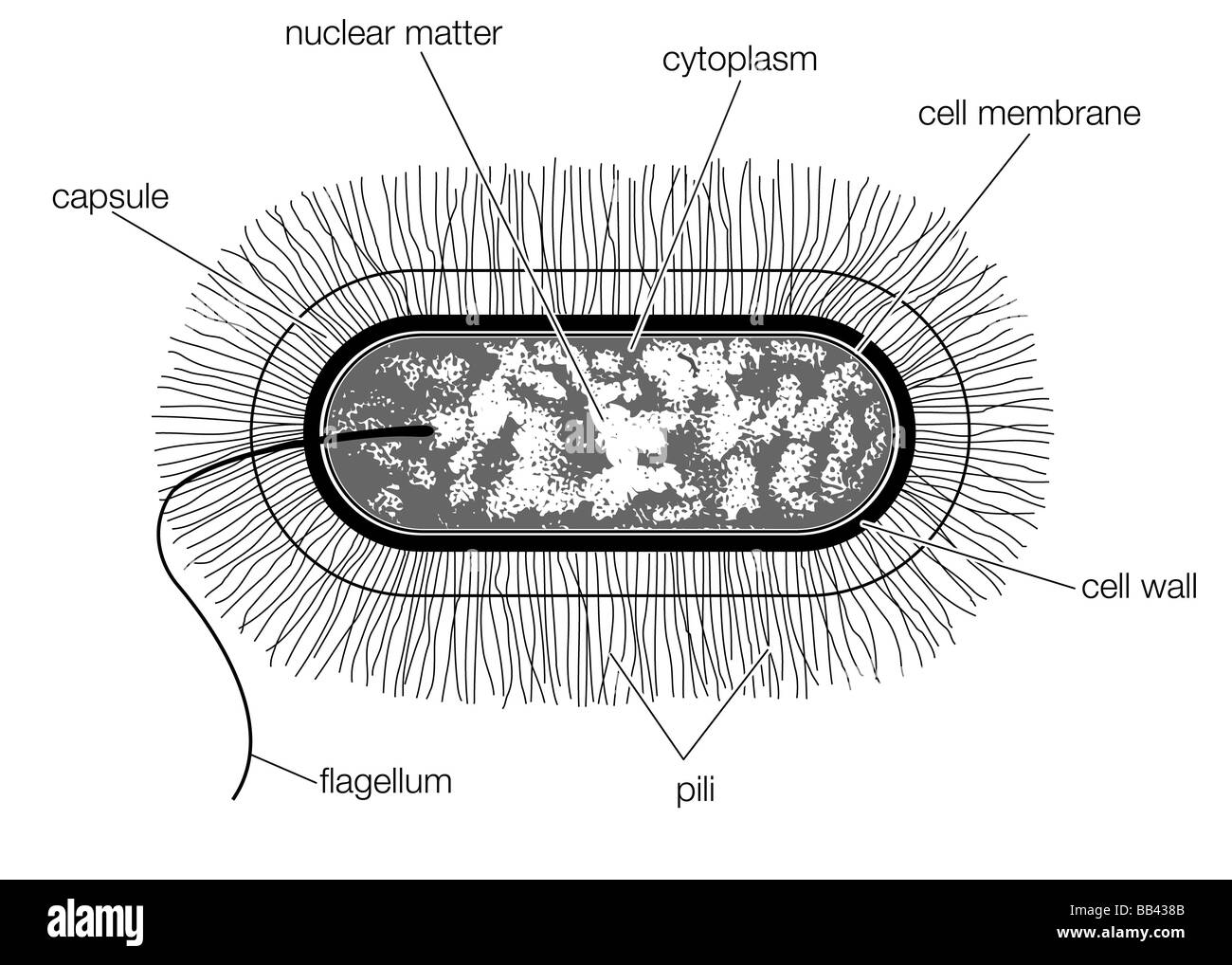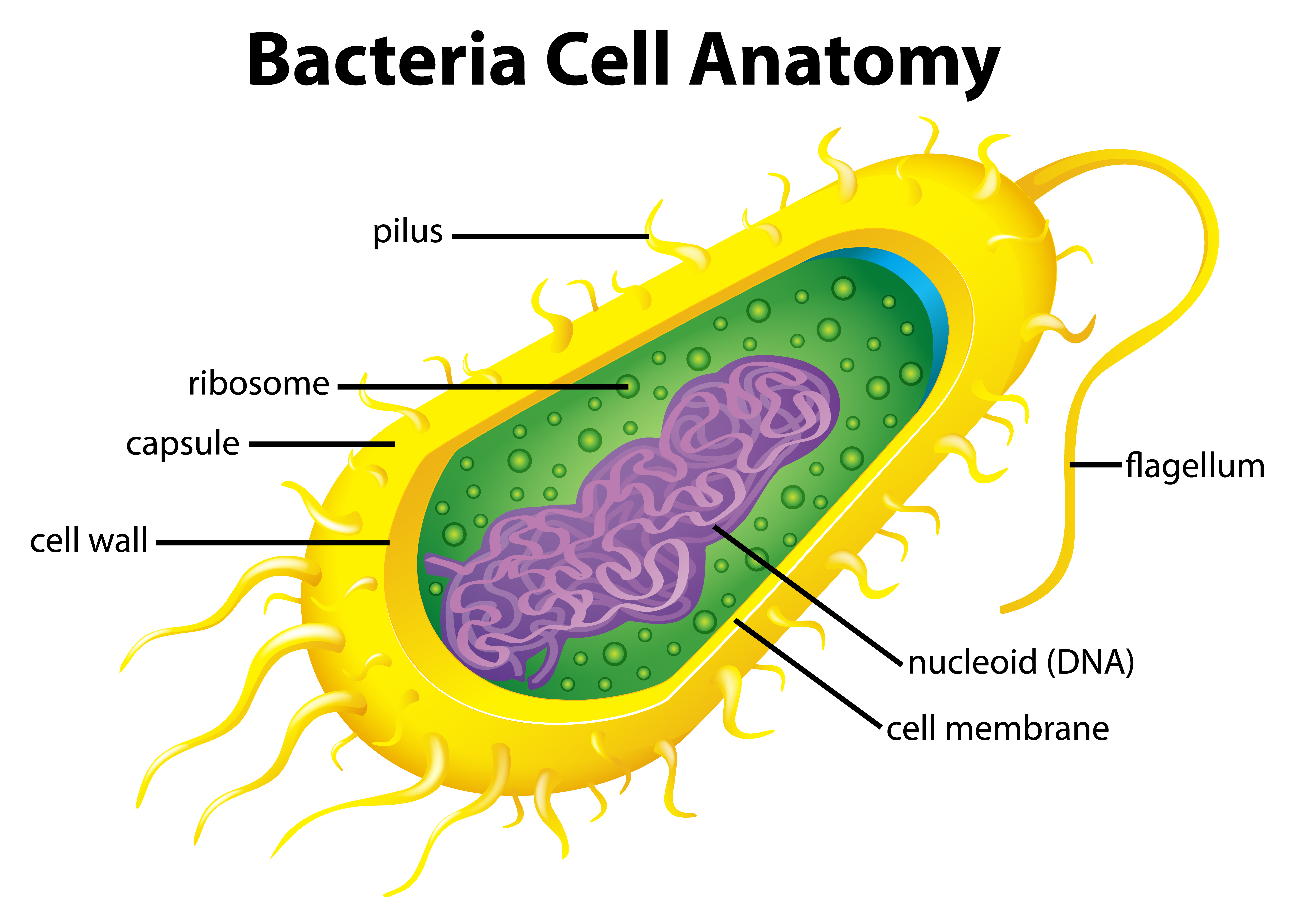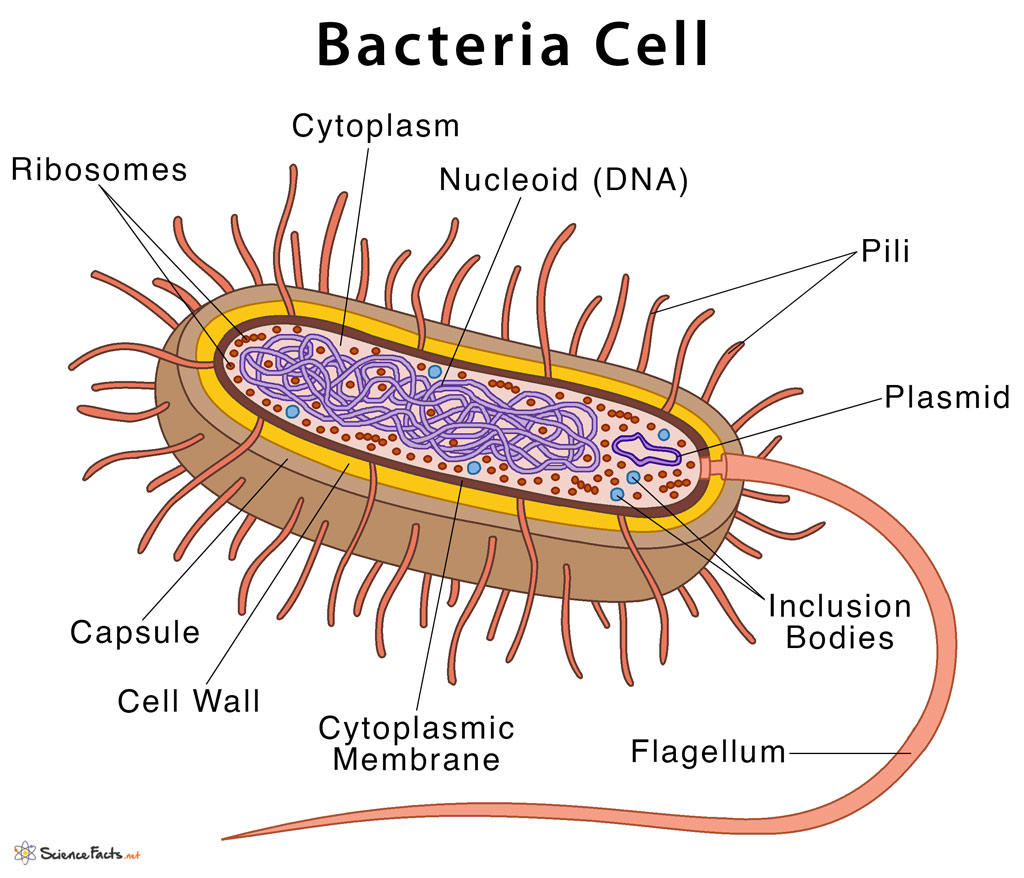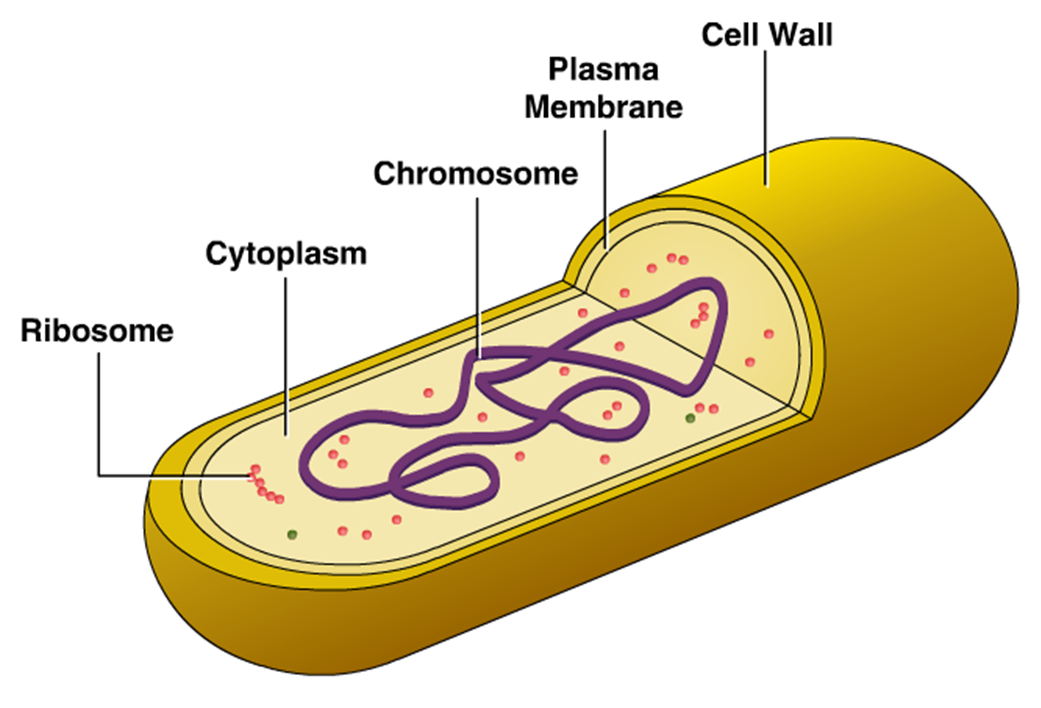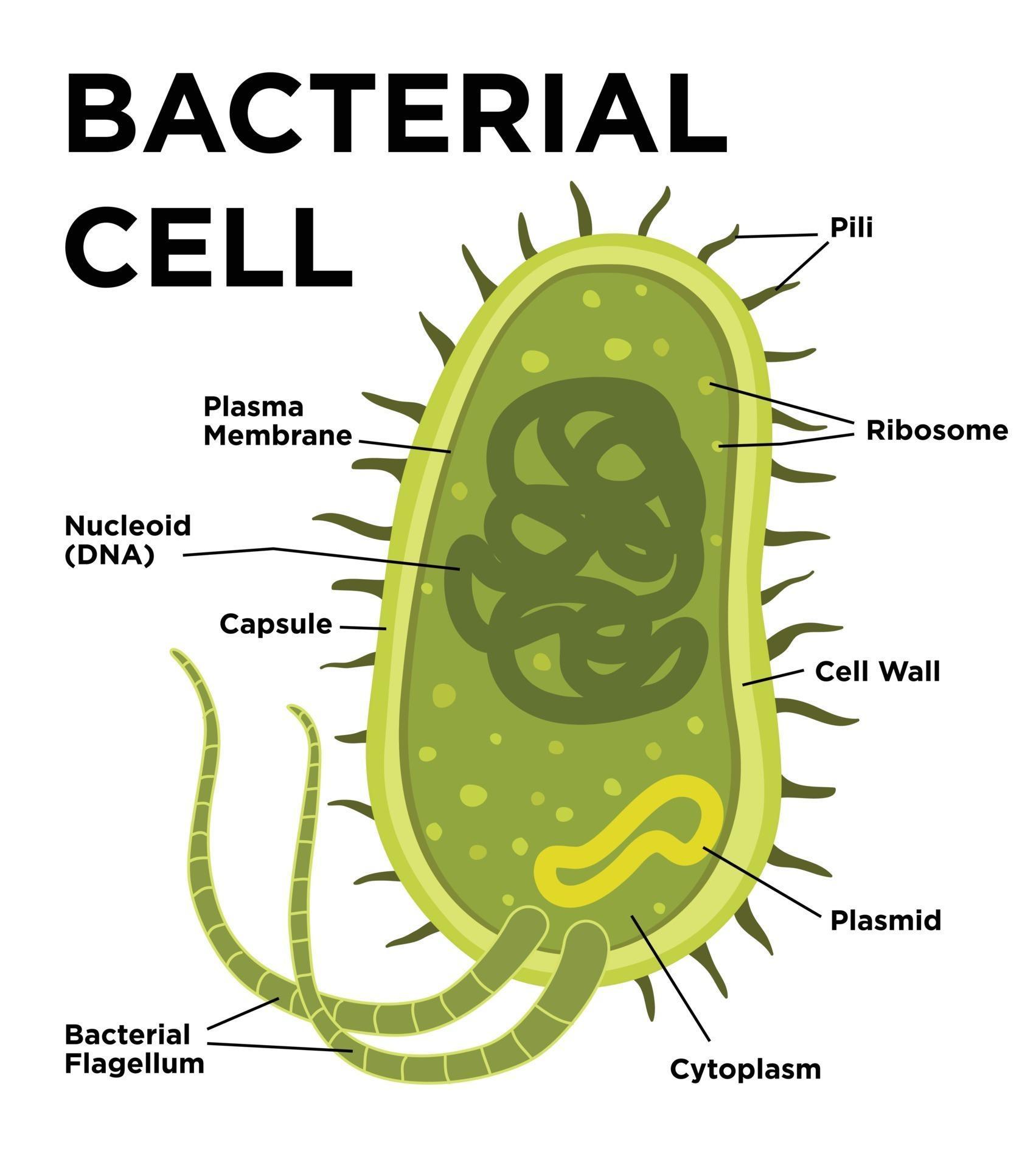Bacteria Cell Drawing
Bacteria Cell Drawing - Web bacteria are unicellular organisms with a simple structure. Web the bacteria diagram given below represents the structure of a typical bacterial cell with its different parts. Get free printable coloring page of this drawing. Web bacterial infections have long been a scourge for humanity. A typical bacterial cell resembles a plant cell and has a complex membrane, cell walls, cytoplasm, and nucleoids. Describe the functions of the structures found in prokaryotic cells. The cell wall provides an extra layer of protection, helps the cell maintain its shape, and prevents dehydration. Web the structure of the bacteria consists of three major parts: The following image is a diagram of a prokaryotic cell; They come in many shapes and sizes, from minute spheres, cylinders and spiral threads, to flagellated rods, and filamentous chains. Web the bacteria diagram given below represents the structure of a typical bacterial cell with its different parts. Many bacteria also have an outermost layer of carbohydrates called the capsule. Pilus (plural pili) plasma membrane. Web in this video, we show you how to draw and label a basic bacterial cell. Light and electron microscopes allow us to see inside cells. The cell wall provides an extra layer of protection, helps the cell maintain its shape, and prevents dehydration. January 29, 2024 | published on: Get free printable coloring page of this drawing. The anatomy of a bacterial cell prokaryotic cell structure. Based on planes of division, the coccus shape can appear in several distinct arrangements: Web there are three basic shapes of bacteria: Pilus (plural pili) plasma membrane. Web we use to see them via microscope. This video explains how to draw structure of bacterial. Web the structure of the cell wall of the bacteria determines which dye is visible at the end of the procedure. A typical bacterial cell resembles a plant cell and has a complex membrane, cell walls, cytoplasm, and nucleoids. Many structural features are unique to bacteria and. So in this diagram we try to teach you to draw the parts of bacteria in a easy way. Web bacteria are unicellular organisms with a simple structure. Prokaryotic cells do not have a. (the red dye also binds, but the violet dye covers it up.) The anatomy of a bacterial cell prokaryotic cell structure. In this case, a bacterium. The current methods rely on the subjective reading of. Light and electron microscopes allow us to see inside cells. Web how to draw bacteria. Bacterium) are unicellular prokaryotic microorganisms which divide by binary fission. Describe the functions of the structures found in prokaryotic cells. Little structural detail can be made out in such a small body with an ordinary light microscope. This will also help you to draw the structure and diagram of bacterial cell. Describe the functions of the structures found in prokaryotic cells. Light and electron microscopes allow us to see inside cells. Plant, animal and bacterial cells have smaller components each with a specific function. The current methods rely on the subjective reading of. Many bacteria also have an outermost layer of carbohydrates called the capsule. (the red dye also binds, but the violet dye covers it up.) Web geometric shape features are used to identify the morphological characteristics, namely, flagella and fimbriae or pili of bacterial cells. Bacterium) are unicellular prokaryotic microorganisms which divide by binary fission. Web bacterial infections have long been a scourge for humanity. Web the bacteria diagram given below represents the. Web there are three basic shapes of bacteria: In the past century, the discovery and widespread use of antibiotics have somewhat improved the treatment of these infections. Many bacteria also have an outermost layer of carbohydrates called the capsule. Diplococcus, streptococcus, tetrad, sarcina, and staphylococcus. A typical bacterial cell resembles a plant cell and has a complex membrane, cell walls,. Many structural features are unique to bacteria and. They come in many shapes and sizes, from minute spheres, cylinders and spiral threads, to flagellated rods, and filamentous chains. Bacterium) are unicellular prokaryotic microorganisms which divide by binary fission. The following image is a diagram of a prokaryotic cell; Plant, animal and bacterial cells have smaller components each with a specific. A typical bacterial cell resembles a plant cell and has a complex membrane, cell walls, cytoplasm, and nucleoids. Outer layer (cell envelope), cell interior, and additional structures. Prokaryotic cells do not have a true nucleus that contains their genetic material as eukaryotic cells do. So in this diagram we try to teach you to draw the parts of bacteria in. (the red dye also binds, but the violet dye covers it up.) The cell wall, plasmid, cytoplasm and flagella are clearly marked in the diagram. Pilus (plural pili) plasma membrane. The cell envelope comprises a rigid cell wall and an underlying cytoplasmic or plasma membrane. The anatomy of a bacterial cell prokaryotic cell structure. The cell envelope comprises a rigid cell wall and an underlying cytoplasmic or plasma membrane. Little structural detail can be made out in such a small body with an ordinary light microscope. Web prokaryotic cell diagram. Light and electron microscopes allow us to see inside cells. Procaryotic structural components consist of macromolecules such as dna, rna, proteins, polysaccharides, phospholipids, or some combination thereof. Many structural features are unique to bacteria and. So in this diagram we try to teach you to draw the parts of bacteria in a easy way. They come in many shapes and sizes, from minute spheres, cylinders and spiral threads, to flagellated rods, and filamentous chains. Based on planes of division, the coccus shape can appear in several distinct arrangements: Web a typical bacterial cell is structurally very similar to a plant cell. Primary structure of biological macromolecules determines function. Web most bacteria are, however, surrounded by a rigid cell wall made out of peptidoglycan, a polymer composed of linked carbohydrates and small proteins. It includes the cell wall of bacteria and the plasma membrane beneath it. Describe the functions of the structures found in prokaryotic cells. Prokaryotic cells do not have a true nucleus that contains their genetic material as eukaryotic cells do. In the past century, the discovery and widespread use of antibiotics have somewhat improved the treatment of these infections.Doodle character for bacteria cell anatomy 431258 Vector Art at Vecteezy
Bacterial Cell Structure and Function
Bacterial Cell Model Labeled
Schematic drawing of the structure of a typical bacterial cell of the
Bacteria Cell Vector Art, Icons, and Graphics for Free Download
Bacterial Cell Diagrams 101 Diagrams
Types Of Bacterial Cells
Cellular Structure of Bacteria ZeroInfections
How to Draw Bacteria Really Easy Drawing Tutorial
Bacterial cell anatomy in flat style. Vector modern illustration
The Unicell Is Exceedingly Small In Size.
Many Bacteria Also Have An Outermost Layer Of Carbohydrates Called The Capsule.
38K Views 1 Year Ago #Biology #Science #Ncert.
Get Free Printable Coloring Page Of This Drawing.
Related Post:
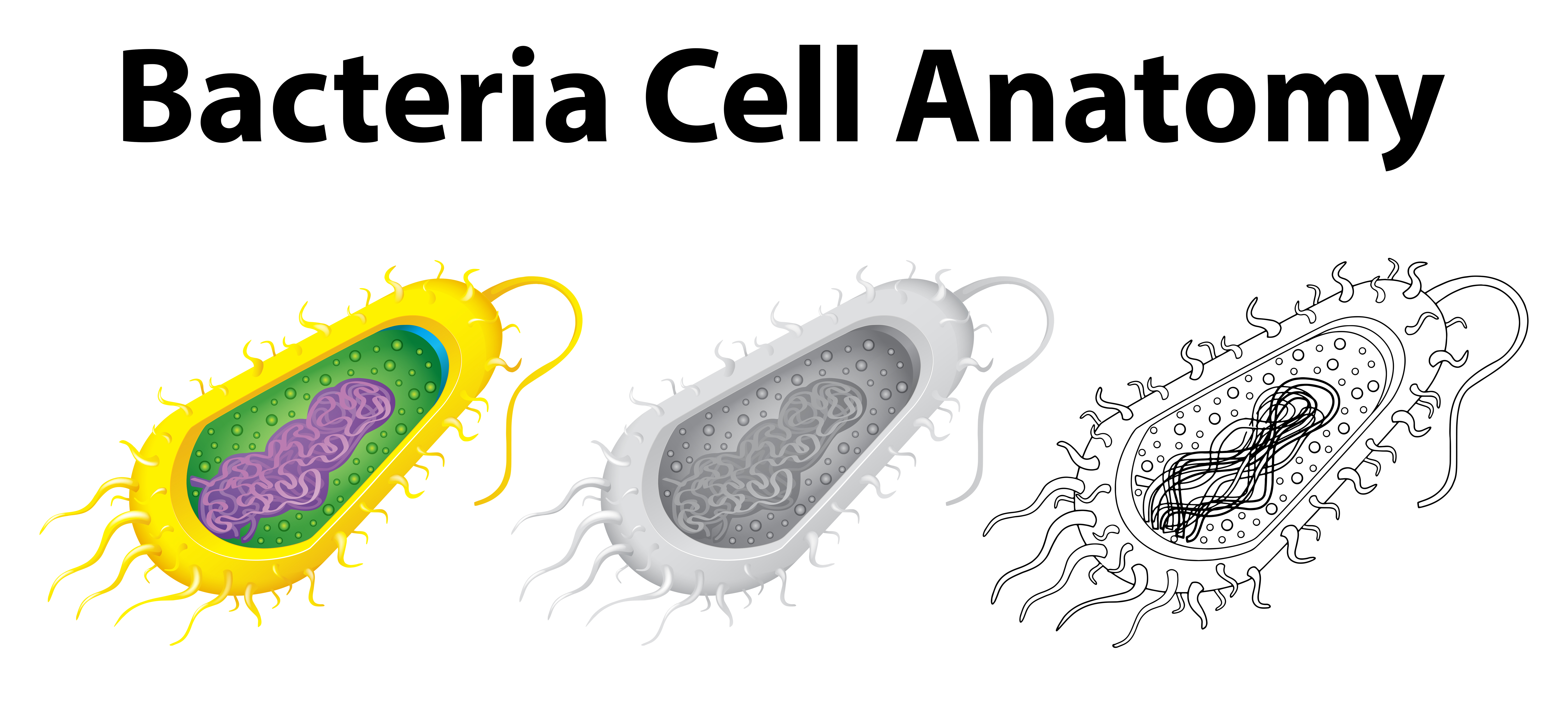
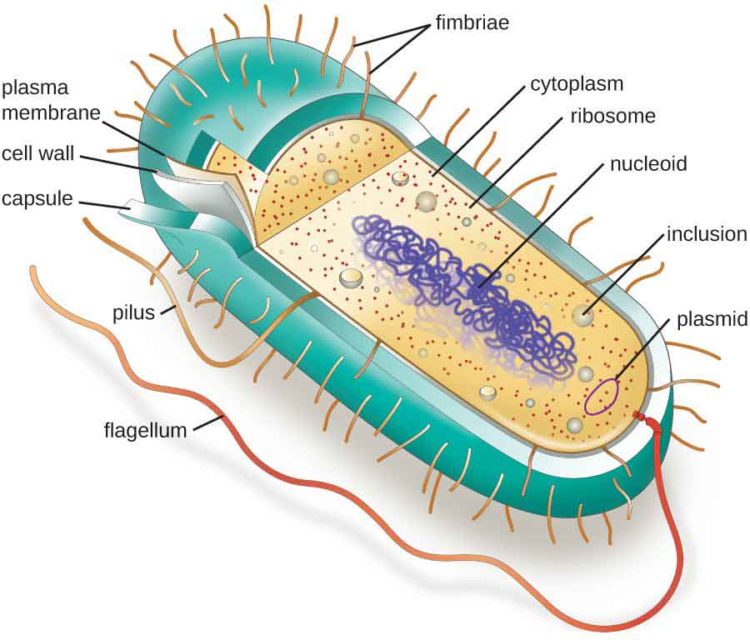
:max_bytes(150000):strip_icc()/bacteria_cell_drawing-5786db0a5f9b5831b54f017c.jpg)
